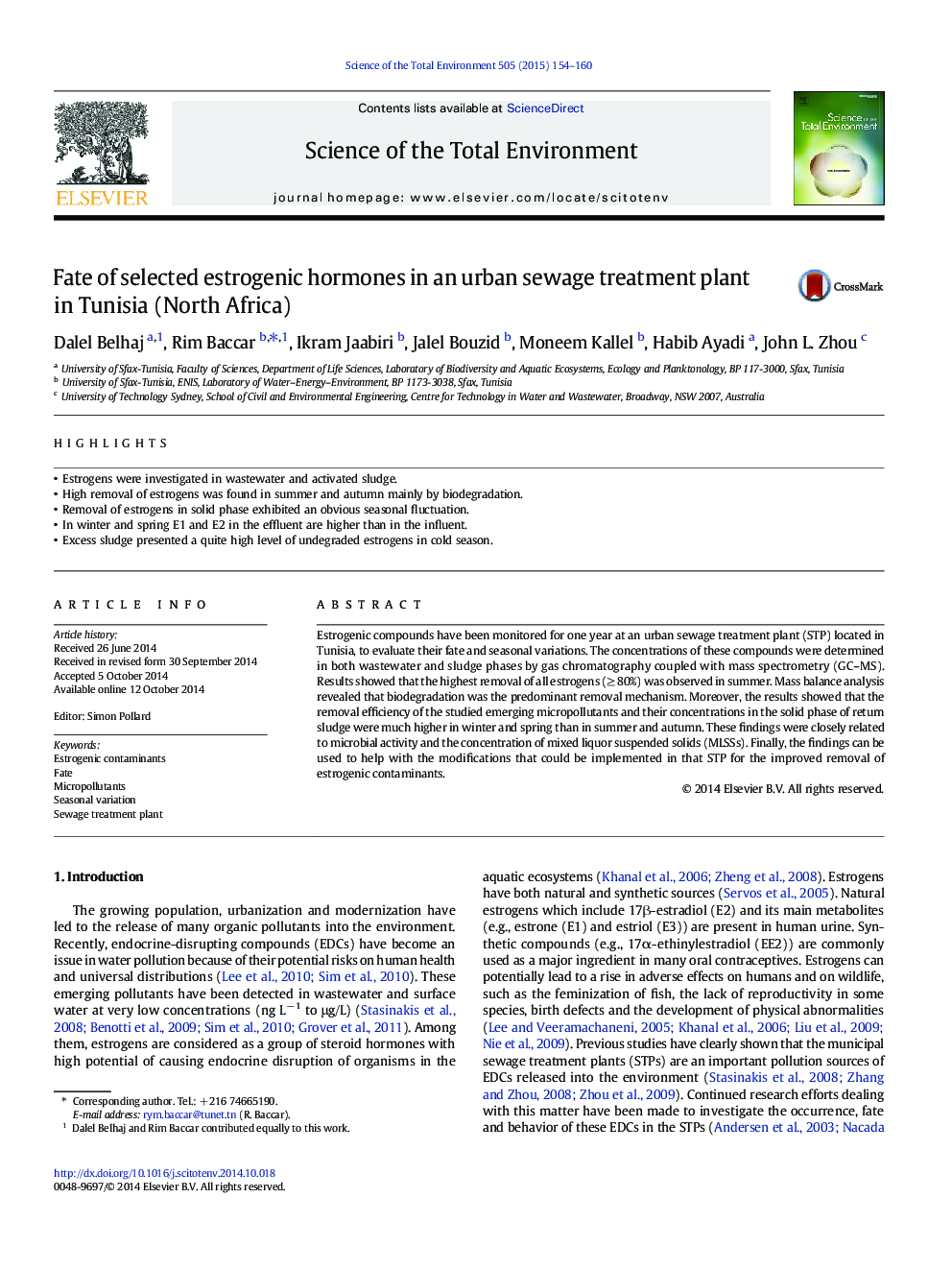| Article ID | Journal | Published Year | Pages | File Type |
|---|---|---|---|---|
| 6327996 | Science of The Total Environment | 2015 | 7 Pages |
â¢Estrogens were investigated in wastewater and activated sludge.â¢High removal of estrogens was found in summer and autumn mainly by biodegradation.â¢Removal of estrogens in solid phase exhibited an obvious seasonal fluctuation.â¢In winter and spring E1 and E2 in the effluent are higher than in the influent.â¢Excess sludge presented a quite high level of undegraded estrogens in cold season.
Estrogenic compounds have been monitored for one year at an urban sewage treatment plant (STP) located in Tunisia, to evaluate their fate and seasonal variations. The concentrations of these compounds were determined in both wastewater and sludge phases by gas chromatography coupled with mass spectrometry (GC-MS). Results showed that the highest removal of all estrogens (â¥Â 80%) was observed in summer. Mass balance analysis revealed that biodegradation was the predominant removal mechanism. Moreover, the results showed that the removal efficiency of the studied emerging micropollutants and their concentrations in the solid phase of return sludge were much higher in winter and spring than in summer and autumn. These findings were closely related to microbial activity and the concentration of mixed liquor suspended solids (MLSSs). Finally, the findings can be used to help with the modifications that could be implemented in that STP for the improved removal of estrogenic contaminants.
